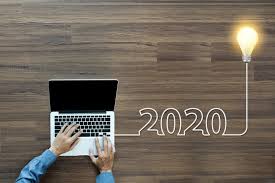A Web 3.0 revolution that could relieve us of our social dilemmas
Jaspreet Bindra
Social media is being heavily discussed again, ironically largely on its own creations. There are really three big reasons why it is even more in the spotlight than usual. The first is the impending US Presidential Election. Ghosts of Cambridge Analytica, the social analytics and big data firm which manipulated Facebook accounts to impact both the 2016 US Presidential elections and the BREXIT vote, are coming to haunt us again. The impending elections are spawning the likes of uber-conspiracy group QAnon and stoking the divide in the Black Lives Matter movement, making Cambridge Analytica look gentle in comparison. The second reason is the COVID pandemic. Social media has emerged as both a force for good, with effective communication and lockdown entertainment, but also for evil, with it being used effectively by the anti-vaxxers and the Unmask movement to proselytize their own perverted agenda.
The third reason has perhaps been the most stunning and appalling, an innocuous drop by Netflix of a documentary called The Social Dilemma. This one-and-a-half-hour film attempts to expose the ways in which technology giants have manipulated human psychology to influence how we behave. And if this this sounds frightening; it is very much so. It explains how the CEOs of tech companies severely curtail screen time of their own children, while attempting to addict every other adult and child on the planet. Reportedly, Mark Zuckerberg, the original social media tsar, masks his own laptop camera with a tiny duct tape.
As people realise that social media is a quicksand inexorably sucking them in bit by inevitable bit, there is a rising clamour for an alternative. It is clear that we need one, but what is this alternative? As I have written before, the big problem with social networks is not the technology, or the product, or even the early intent of the founders. The problem with social media is the business model.
The Internet was created as a distributed set of computers directly communicating with each other, with each sharing its load of managing and maintaining the network. This Web 1.0, and it worked very well. However, it had one big problem – there was no way to make money off it. For instance, a Web 1.0 startup called Google was having great traffic and traction, but it was not making any real money. Then, in 2001, it developed AdWords, a pay-per-click, auction-based search advertising model, backed by search and monetization algorithms. Google’s revenues rocketed to $2.7bn from $87mn in three years when it went public, and in 2020 it sits at a trillion-dollar valuation. The Internet had been monetized, Web 2.0 was born, and our intent, personas and desires identified with laser precision, and sold to willing advertisers. Facebook joined the party, with a different way of dipping into the same advertising honeypot.
Come 2020, search and social media advertising has crossed $200bn, rocketing past print at $65bn, and TV at $180bn. All of this money comes from us, the user, who purportedly gets all these wonderful products free, forgetting that when anything is free, you are the product. This business model has a side-effect of driving a winner-take-all industry structure, creating natural monopolies and centralizing the previously-decentralised Internet. It is estimated that more than 90 percent of all the trillions of pictures out there are hosted by Facebook or one of its companies, WhatsApp and Instagram!
An alternative, therefore, will not be as much driven by technology or regulation, but by a new business model. The good news is that new business models are emerging, indicating the emergence of Web 3.0 – a revolution which promises to return the internet back to the hands of users, and built on a different construct with a different philosophy. One is to allow explicit consent over your data, an initiative aided by GDPR-like regulation coming in. The other is that the creators of the content in the networks – artists, musicians, photographers, me and you – get a portion of the revenue generated by the networks, unlike now where the platform takes them all. The technologies it leverages are newer technologies like blockchains; these technologies are inherently decentralised and peer-to-peer, they provide hard technology guardrails to the accumulation of power and data in the hands of a few. Digital currencies enabled by these technologies, like Bitcoin, Ethereum, Steem and other cryptocurrencies offer an alternative business model of users paying for services and content with micro-transactions, as an alternative to advertiser-pays.
The startups driving this are still at an embryonic stage, a good example is a homegrown Indian startup called GoSocial, tellingly born of a tweet that Anand Mahindra put out when the Cambridge Analytica scandal broke, appealing for a ‘new kind of social network’. The path to success by these new kinds of democratic networks will be arduous and protracted. But the revolution has begun, and it is our revulsion and resistance towards the current models that will drive us out of our social dilemmas.
(This was published as an OpEd in Mint dated Sep 19, 2020)


